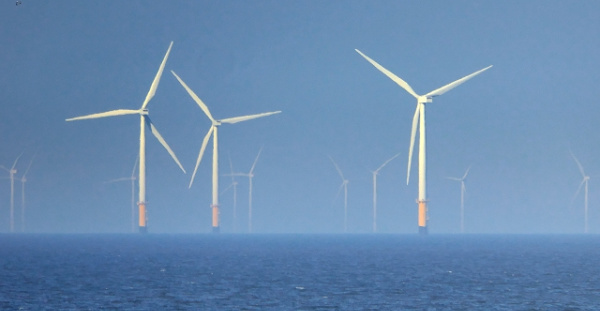
5 Ways the Energy Industry Will Change in 2021
A transition has been underway over the last decade or more that’s creating a smarter and cleaner energy ecosystem. This includes innovations around the smart grid, energy efficiency, renewable energy and energy storage.
With a new administration coming into the White House in late January, many expect these innovations to accelerate in 2021. As a presidential candidate, the now President-Elect Joe Biden pledged $2 trillion in energy and infrastructure spending over his four-year term.
Let’s look at some of the major changes taking place today that could accelerate under the incoming Biden administration:
1. Offshore wind will begin to take hold in the U.S.
Wind turbines are already dotting the horizon of many ocean vistas in Northern Europe. A major offshore wind farm recently came online in the Netherlands that can power one million households – yet this is dwarfed by projects under construction that will be completed in the next few years.
The United States, it seems, may be beginning to wake up to the incredible potential of offshore wind. Several states along the Eastern Seaboard have projects in the works, including Virginia, New York, Rhode Island and New Jersey. For example, the recently announced Atlantic Shores wind farm, financed by the oil and gas company Royal Dutch Shell, will power about one million homes when it becomes operational later this decade.
2. The electric vehicle revolution will continue to pick up steam
More and more electric vehicles (EVs) have been appearing on the roads in recent years, but according to a recent interview with a Nissan executive, we’ve now reached a “turning point” due to the rapid expansion of charging infrastructure and the deluge of new models coming on the market.
According to estimates, there were only around 17,000 electric cars globally in 2010. However, at the start of 2020, that figure was over seven million, and more EVs are being sold every day. Next year is going to bring a “tidal wave” of new EV models, including the much-anticipated Rivian truck, Ford’s electric Mustang, an affordable Volkswagen and Volvo’s electric SUV.
3. Utilities and corporations will invest in solar energy at record levels
Despite the upheaval caused by the COVID-19 pandemic, large-scale solar installations haven’t slowed down. According to a new report, solar installations are expected to grow by 43 percent this year, and the sector is expected to install a total of 19 gigawatts – enough to power nearly four million homes.
In addition to activity from utilities, corporations continue to invest in clean energy sources at record levels. With Amazon’s latest investments in 26 solar and wind projects, the company is now investing in 6.5 gigawatts of renewable energy (enough to power about 1.7 million homes for a year) and has surpassed Google as the largest corporate buyer of renewables.
4. Energy efficiency will see more support from the federal government
Energy efficiency is an essential part of creating a clean energy economy – it saves money, increases comfort and improves air quality – however, it has fallen to the wayside in recent years on the federal level. While many utilities and states have continued to invest in this area, the Trump administration has rolled back many efficiency standards.
However, the incoming president’s energy plan includes a considerable focus on energy efficiency. The plan looks to upgrade and weatherize millions of homes and businesses and incentivize efficient-appliance manufacturing. According to a report, consumers and businesses could save more than $1 trillion on utility bills through 2050 if the new administration updates efficiency standards for many types of appliances and products.
5. Energy storage will become an increasingly important part of the power grid
Finally, energy storage, specifically battery storage, will be added to homes, businesses and the power grid at record levels as prices for these technologies continue to drop. A new report found that the cost of lithium-ion battery storage has dropped from $1,200 per kilowatt-hour in 2010 to just $137 per kilowatt-hour today, leading to the “dawn of the age of the battery.”
Energy storage is essential for increasing the amount of clean energy on the grid, and it has proven to save utilities and consumers money, while preventing blackouts. A massive Tesla battery in Australia has already saved more than $100 million in two years, and U.S. power companies are beginning to catch on. New York City’s utility just announced a huge battery that will help balance the grid as new offshore wind projects come online.
There’s never been a more exciting time in the energy industry. The innovations mentioned above are already delivering many benefits to society and individual consumers, and with some support from the incoming presidential administration, it’s likely that we’ll see these areas accelerate in 2021 and beyond.
If you want to learn more about renewable energy and its many benefits, check out our fact-based guide on renewable energy here.


